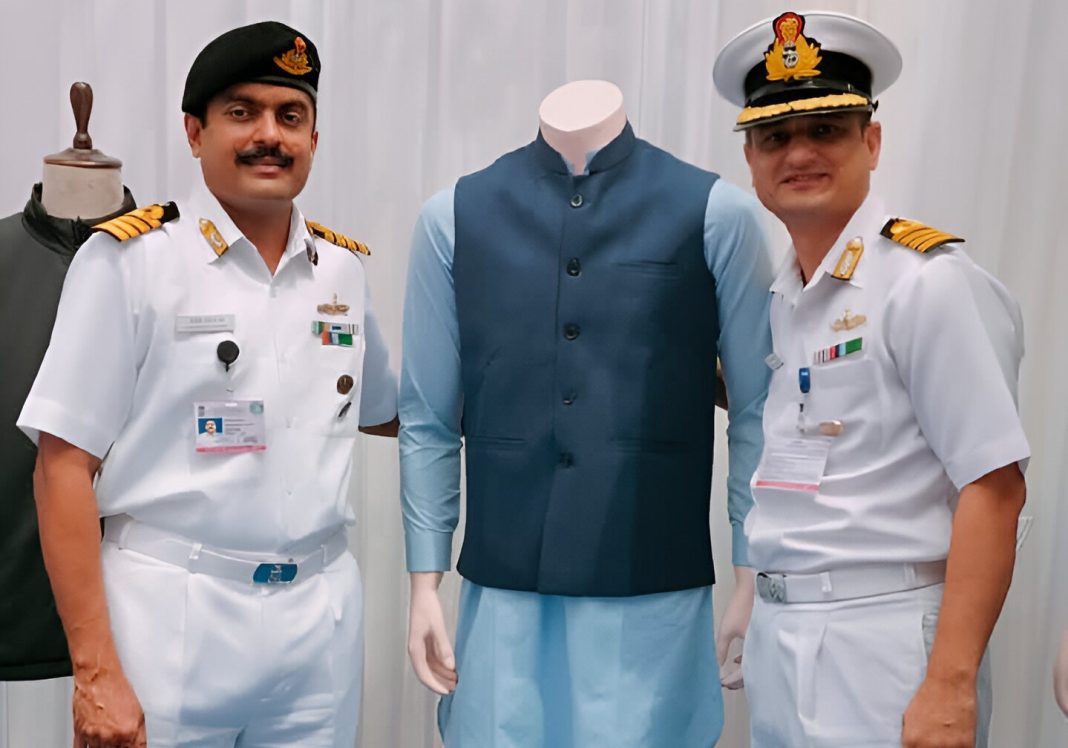In a significant move towards embracing Indian traditions and discarding colonial-era vestiges, the Indian Navy is contemplating allowing its officers and sailors to wear specific traditional Indian attire during formal occasions in messes, wardrooms, and institutes.
This proposal, which is part of the discussions at the ongoing naval commanders’ conference, aims to introduce a “national civil dress for messes and functions” alongside the current formal and operational dress codes.
The idea was showcased with a display of potential attire options on the sidelines of the three-day conference, which includes a short kurta paired with a formal waistcoat and narrow pyjamas, as well as a band-gala suit. These options were presented to junior defence minister Ajay Bhatt, highlighting the Navy’s effort to integrate traditional Indian elements into its formal dress code.
This initiative is still under discussion among the top commanders, and any decision to adopt a national civil dress will come with strict specifications and guidelines to ensure it aligns with the formal nature of military attire.
This move is aimed at enriching the formal wear options available to Navy personnel, which currently include ‘Red Sea Rigs’ and western lounge suits, but notably excludes traditional Indian clothing for male personnel and guests in Army, IAF, and Navy messes.
The Indian Navy has been leading the charge in shedding colonial-era practices and symbols, as part of a broader directive from the government. Navy chief Admiral R Hari Kumar, echoing Prime Minister Narendra Modi’s call for liberation from the colonial mindset, highlighted the Navy’s commitment to identifying and discarding outdated practices. This approach was symbolized by the introduction of a new “swadeshi” Ensign for the Navy, which saw the removal of the colonial-era St George’s Cross, and the unveiling of new Navy symbols that reflect modern India’s ethos and aspirations.
Additionally, the Navy has ceased the practice of officers carrying batons, a colonial legacy deemed out of place in today’s transformed Navy, further emphasizing the shift towards indigenous traditions and modern realities.






